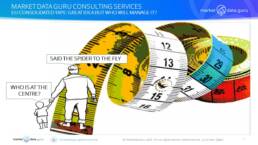

THE US EXPERIENCE
In 1976 the electronic Consolidated Tape System (CTS) was launched to provide last sale and trade data for US equity markets, followed by the Consolidated Quote System (CQS) in 1978. CTS and CQS come under the umbrella of the Consolidated Tape Association (CTA) comprised of all the US exchanges and managed by NYSE. Member driven FINRA set up ‘Trade Reporting & Compliance Engine’ (TRACE) in 2002 firstly to cover US bond markets then asset and mortgage backed securities in 2011.
While they aim to do the same thing, provide 360 degree market transparency, they are very different beasts because of who manages the tapes which has had a significant effect on the cost of data. TRACE data is cheaper (fees at www.finra.org/rules-guidance/rulebooks/finra-rules/7730) and has a simpler pricing structure than the CTA (https://www.nyse.com/publicdocs/ctaplan/notifications/trader-update/Schedule%20Of%20Market%20Data%20Charges.pdf).
The EU in its drive to create harmonised internal capital markets sees a Pan-European consolidated tape as an essential plank in its strategy as well as fostering increased trading transparency. While the principle of an EU CTA has been agreed in principle after many years of debate, the question becomes who will have the responsibility of operating it, and also the coverage, for instance:
- Definitely listed equities, how about other listed instruments, or equity derivatives?
- Fixed income markets, though they are more challenging with multiple types of trading venues, electronic, hybrid and voice
- Other Over-the-Counter (OTC) markets. Unlikely at this point, though centrally cleared SWAPS could well be an option
The problem comes in that no matter how good the EU consolidated tape works in practice, there will be market data fees which will increase costs for the data consumers, in this case financial institutions. This means the question of who manages the consolidated tape becomes very relevant, and its framework, for instance in the US exchanges, and CTA, must justify to, and get approval from, regulators for their market data charges.
OPTIONS FOR MANAGEMENT
There are five potential options for management of any EU Consolidated Tape:
1.An EU agency for instance ESMA, but they lack the inhouse expertise and there is the danger of conflicts of interest
2.Financial institutions themselves, but there are too many, and organising them is like herding cats. It works for FINRA because it is a regulated industry association
3.A big vendor, however, none of these are based in the EU
4.By Big Tech, again these and the likes of a Deloitte, or Accenture with the potential capabilities are not EU based
5.US style CTA made up of a consortium of EU exchanges plus Swiss SIX, i.e. the recently announced JV
The reality is the exchange based consortium is best placed and most likely to be the manager because:
- The data already resides in their systems, and it will be quicker and cheaper to set up.
- The expertise is already in place, at least for equities and exchange traded instruments, but not so much for OTC asset classes
- Vendors, Big Tech, and Global Consulting businesses will only do it for cold, hard cash, besides the most likely candidates are not EU based
- The regulators already have a degree of oversight of their data businesses
For Fixed Income and other OTC markets the issues of a consolidated tape become murkier because:
- There are far more venues and direct peer-to-peer trading which makes aggregation a challenge both logistically and technically
- For instance, only a limited number of venues are fully electronic, many are hybrid, voice, or even email traded
- Any solution would have to focus on traded prices (US-) CTS not tradable prices (US-CTQ)
- The prevalence of illiquid instruments
SUMMARY
The big elephant not in the room is the United Kingdom. While the FCA is studying a consolidated tape the dominance of LSEG and presence of CBOE Europe does not make it such an imperative as financial institutions can easily, and the big ones do, combine the two feeds to get an aggregated view of the market.
The issue is UK/EU cross trading and despite the EU policy of attempting to drag trading away from the London it cannot ignore the power and presence of UK financial markets. The EU ought to co-ordinate with the UK on this, but is unlikely too.
As for the management of the European Consolidated Tape, the exchange JV is almost impossible to bet against given the lack of other realistic options. However it is in the interest of the data consumer that additional market data costs are not large enough to act as a barrier to transparency because smaller financial institutions do not subscribe thereby putting them at a disadvantage.
Any EU Consolidated Tape must be comprehensive while being cost friendly.
BEST PLACED MANAGEMENT CONTENDERS
This means the preference for management must either be the exchange consortium with fee caps and a regulatory approval regime or a financial industry association with the know-how and technical capabilities to run a consolidated tape.
The following questions are
1.Should the consolidated tapes for equities and fixed income be run by the same management group or two different ones?
2.How many markets/asset classes are set up for, or would benefit from, having a consolidated tape in place?
Keiren Harris 08 March 2023
For information on our consulting services please email Knharris@marketdata.guru
https://marketdata.guru/data-compliance
Please contact info@marketdata.guru for a pdf copy of the article


